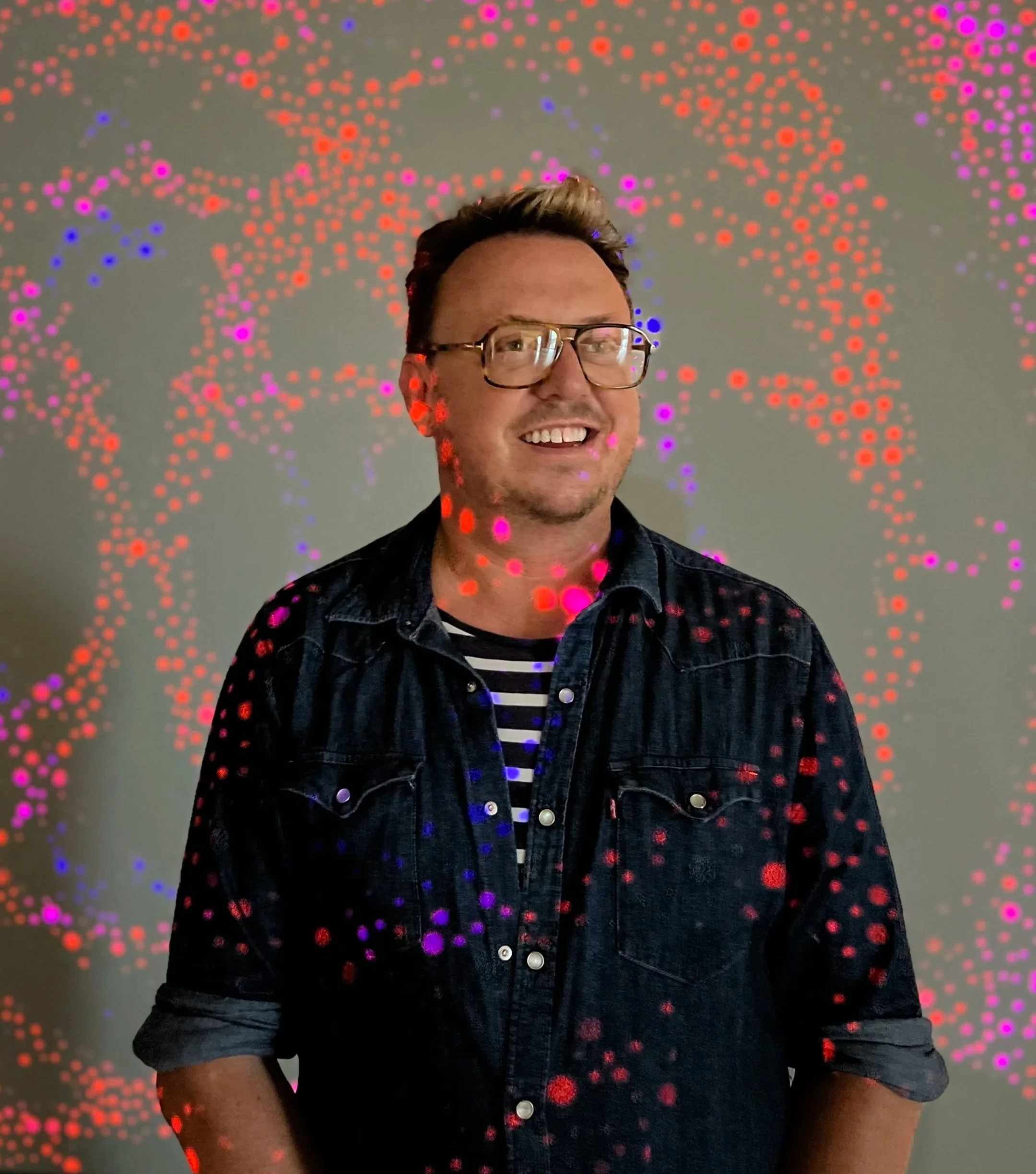Iain Dawson
Principal
For more than two decades, Iain Dawson has been a leading figure in Australian contemporary art, shaping national conversations around curatorial practice, cultural leadership, and regional development. His career reflects a sustained commitment to artistic excellence, institutional growth, and the transformative potential of art to connect communities locally, nationally, and internationally.
Dawson began his career as an assistant curator in a major public photography institution, developing a foundational understanding of collection management, exhibition development, and artist liaison. This early work cultivated a deep engagement with contemporary practice and the dynamics of curating within a rapidly evolving cultural environment.
Progressing to management roles in the commercial sector, Dawson was responsible for the full operation of contemporary galleries, overseeing exhibition programming, sales, and marketing while fostering the careers of emerging and established artists. His leadership helped to strengthen the presence of Australian art in both domestic and international markets, and his work in developing new audiences and supporting professional practice contributed to the visibility of Australian contemporary artists on the global stage.
As a director of major national art fairs, Dawson played a significant role in the professionalisation and commercial advancement of the Australian art market. He facilitated opportunities for hundreds of artists and galleries, managed large-scale budgets, and led cross-sector collaborations that generated substantial economic outcomes for the cultural and creative industries. His ability to integrate strategic planning, creative direction, and stakeholder management positioned him as a key figure in expanding the reach and reputation of Australian art events.
Establishing his own gallery in the late 2000s, Dawson created a platform dedicated to the presentation of new and experimental practices. His curatorial approach balanced intellectual rigour with accessibility, enabling collectors, institutions, and the broader public to engage with emerging voices and challenging ideas. The gallery’s program was recognised for its innovation, professionalism, and its contribution to public collections nationally.
In 2013, Dawson transitioned into the public sector, bringing his commercial experience and curatorial insight to the leadership of a regional art museum. Over a decade of directorship, he redefined the organisation’s strategic direction, expanding its curatorial vision, audience engagement, and funding base. Under his stewardship, the gallery underwent a major redevelopment, doubling its exhibition footprint and delivering state-of-the-art facilities for display, storage, and education. Dawson guided every stage of the project, from concept to completion, including architectural consultation, branding, policy design, and the development of a long-term strategic framework.
His curatorial practice is distinguished by a commitment to cross-cultural dialogue, regional identity, and curatorial innovation. He has curated exhibitions that bridge historical and contemporary narratives, explored intersections between art and environment, and fostered cultural exchange across the Asia-Pacific region. His leadership has resulted in numerous national awards for exhibition excellence, innovation, and audience engagement, and his projects have demonstrably increased cultural tourism and economic growth in the regions he has served.
An international fellowship in 2018 further expanded his perspective on museum operations and audience engagement across Southeast Asia, deepening his understanding of intercultural collaboration and the evolving role of art institutions in the global context.
Dawson’s leadership style is strategic, empathetic, and deeply collaborative. He excels in building partnerships across government, industry, and community sectors, and in aligning creative vision with measurable outcomes. His professional philosophy rests on the belief that art institutions are vital civic spaces—places of learning, connection, and transformation—and his career has been devoted to realising that vision through innovative curatorial practice and organisational excellence.

